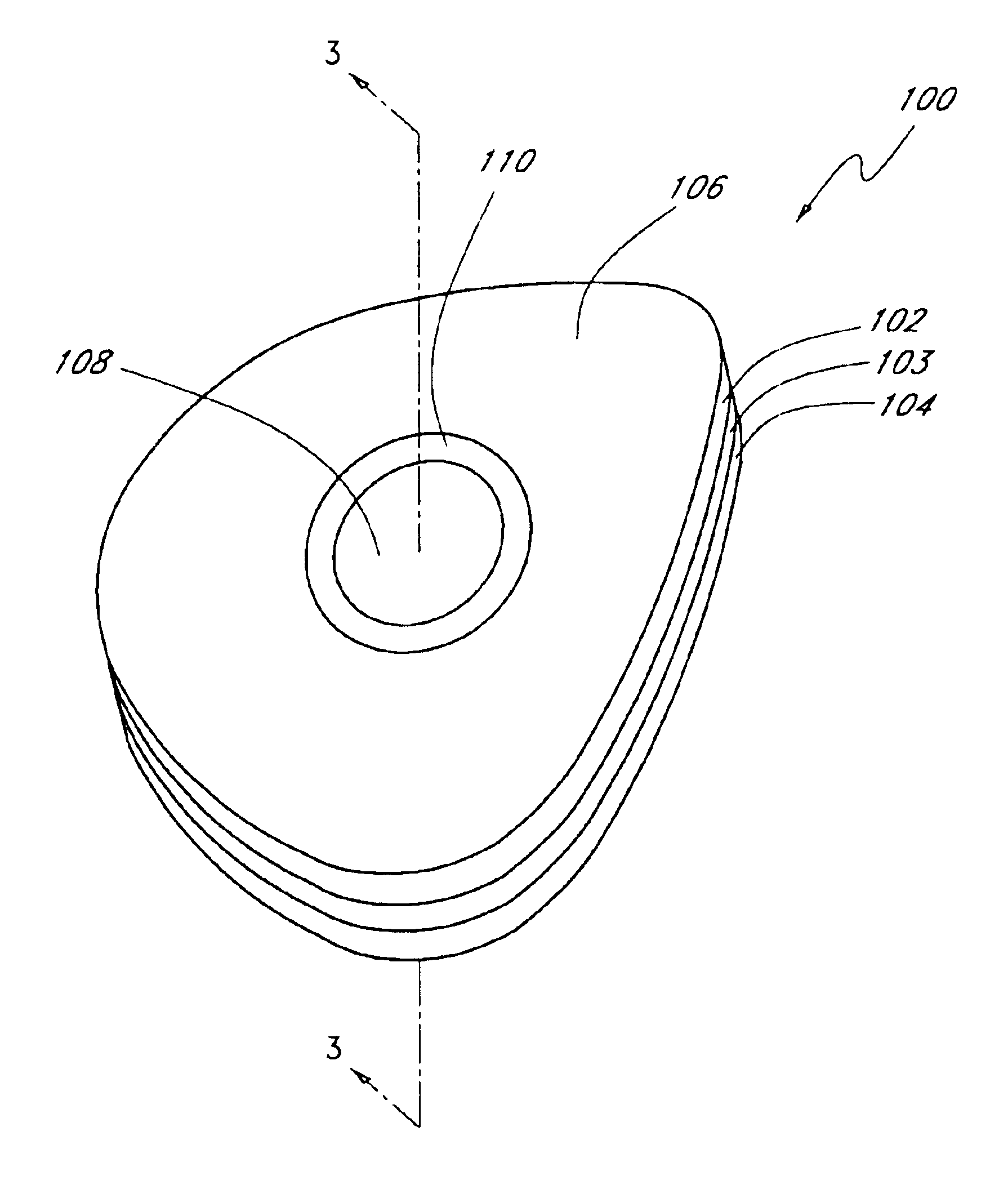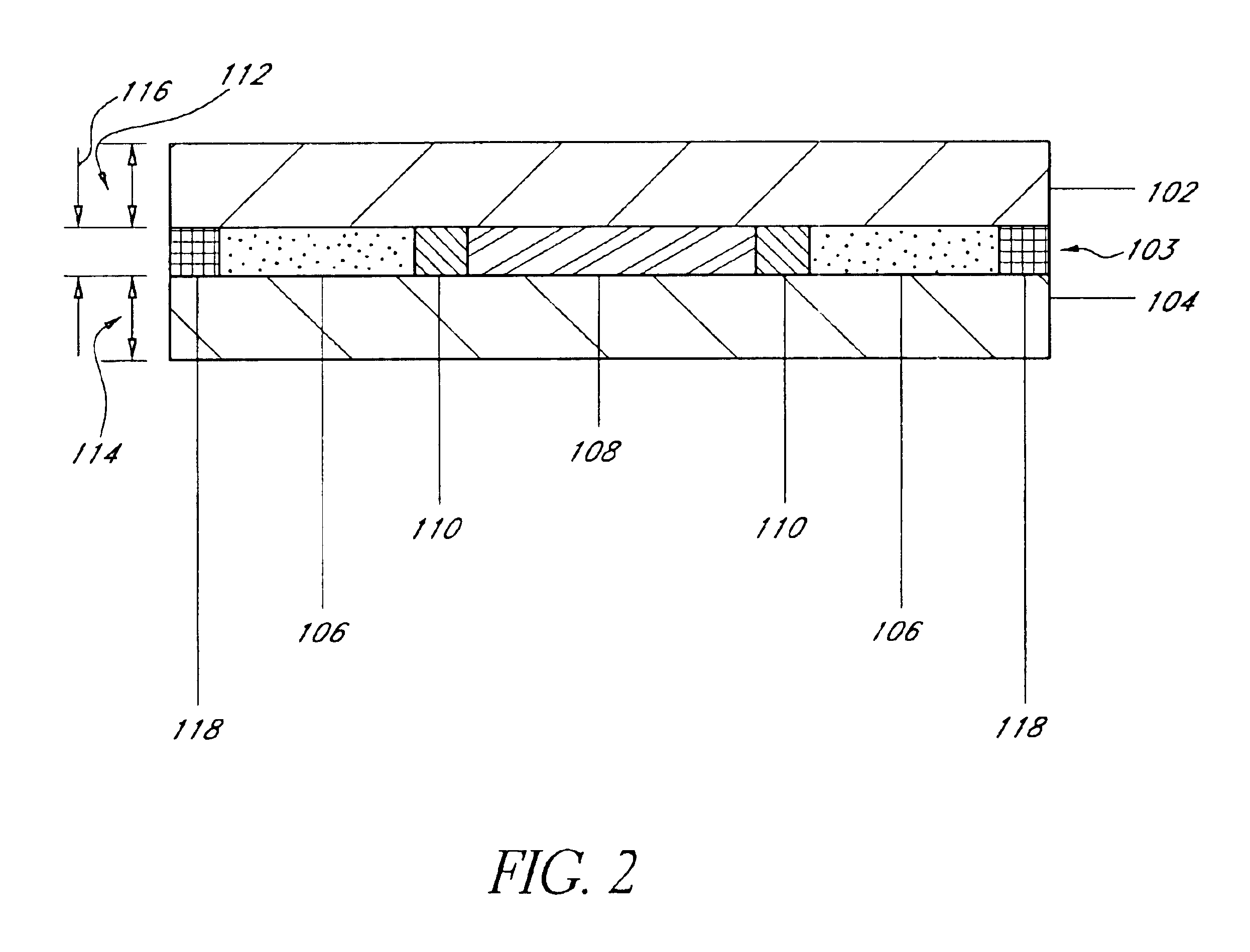Eyeglass manufacturing method using variable index layer
a manufacturing method and variable index technology, applied in the field of wavefront aberrators, can solve the problem that the patient's eye cannot be customized in the true sense, and achieve the effect of enhancing the patient's vision
- Summary
- Abstract
- Description
- Claims
- Application Information
AI Technical Summary
Benefits of technology
Problems solved by technology
Method used
Image
Examples
Embodiment Construction
Referring initially to FIG. 1, a lens assembly that incorporates a supervision zone is shown and generally designated 100. FIG. 1 shows that the lens assembly 100 includes an upper lens 102, a variable index layer 103, and a lower lens 104. In a preferred embodiment, the variable index layer is made of ultra-violet curing epoxy which exhibits an index of refraction that can be changed by exposure to ultraviolet radiation. However, it is to be appreciated that other materials which exhibit similar characteristics, namely a variable index of refraction, may be incorporated into the present invention without departing from the spirit of the invention.
The variable index layer 103 makes up the normal vision zone 106, the transition zone 110, and the supervision zone 108, where the epoxy at each zone is cured to a specific index of refraction. The normal vision zone 106 corrects the lower order spherical and cylindrical aberrations of the patient's eye. The transition zone 110 allows for ...
PUM
| Property | Measurement | Unit |
|---|---|---|
| diameter | aaaaa | aaaaa |
| size | aaaaa | aaaaa |
| constant index of refraction | aaaaa | aaaaa |
Abstract
Description
Claims
Application Information
 Login to View More
Login to View More - R&D
- Intellectual Property
- Life Sciences
- Materials
- Tech Scout
- Unparalleled Data Quality
- Higher Quality Content
- 60% Fewer Hallucinations
Browse by: Latest US Patents, China's latest patents, Technical Efficacy Thesaurus, Application Domain, Technology Topic, Popular Technical Reports.
© 2025 PatSnap. All rights reserved.Legal|Privacy policy|Modern Slavery Act Transparency Statement|Sitemap|About US| Contact US: help@patsnap.com



